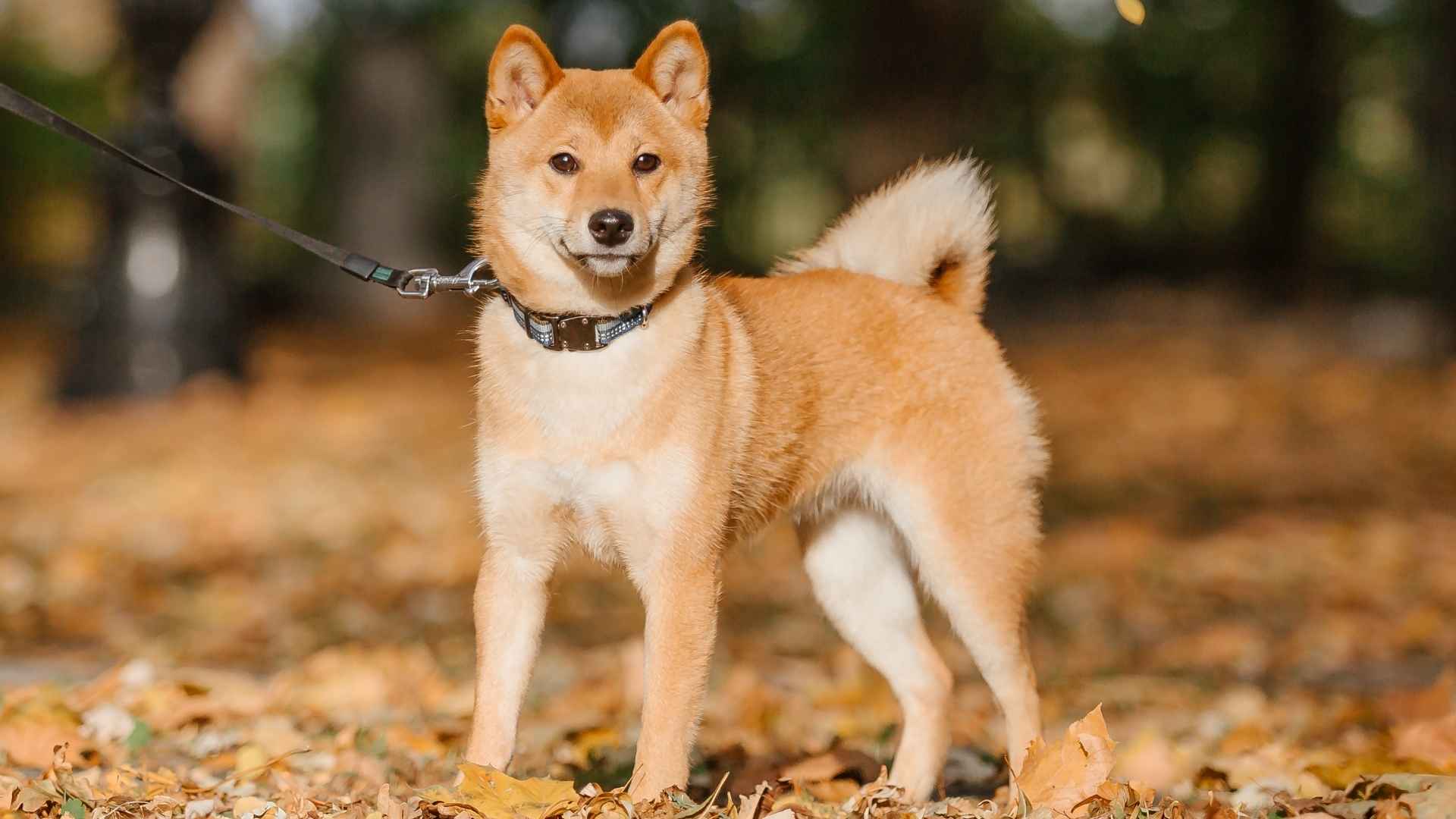Some dogs wear you out. Others hardly notice you’re alive.
But right in the middle are the golden few – dogs that stay calm most of the time but perk up when something needs their attention.
These special breeds won’t run you ragged or bark nonstop, but they’ll let you know if someone’s at the door. The best part? Many of these balanced breeds live much longer than others. While some popular dogs only make it to 8-10 years, these can reach 15 or more!
Think about that – almost twice the time with your best friend. Whether you live in a tiny apartment or a big house, these long-lasting, easy-going but watchful dogs make perfect pets.
Calm but Attentive Dog Breeds with a long lifespan
1. Shih Tzu
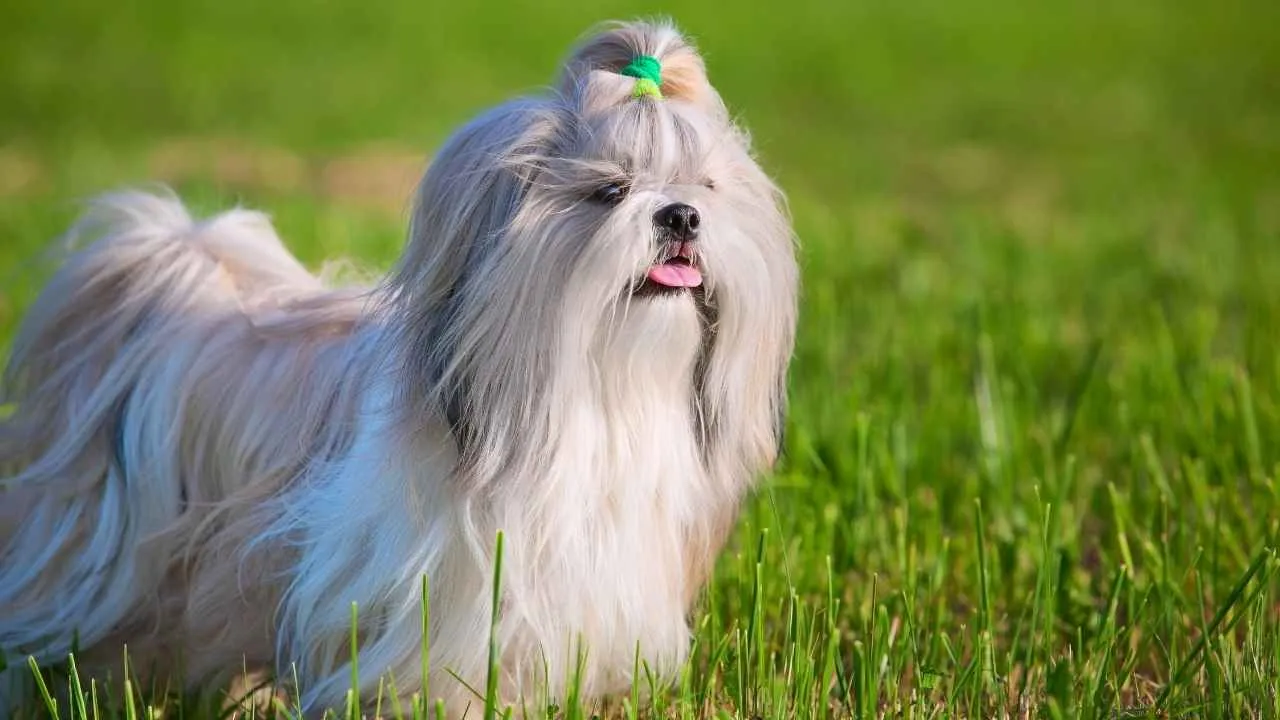
The Shih Tzu is one of those calm dog breeds that doesn’t need a big personality to make a big impact. Known for their laid-back charm, these dogs are quietly observant and often tuned in to what’s happening around them, whether it’s your footsteps or the doorbell ringing. They’re rarely overexcited but will always be the first to notice something’s off.
Companions Through and Through
Shih Tzus make great family dogs because of their friendly and affectionate temperament. They love to be around people and are especially good with kids and seniors.
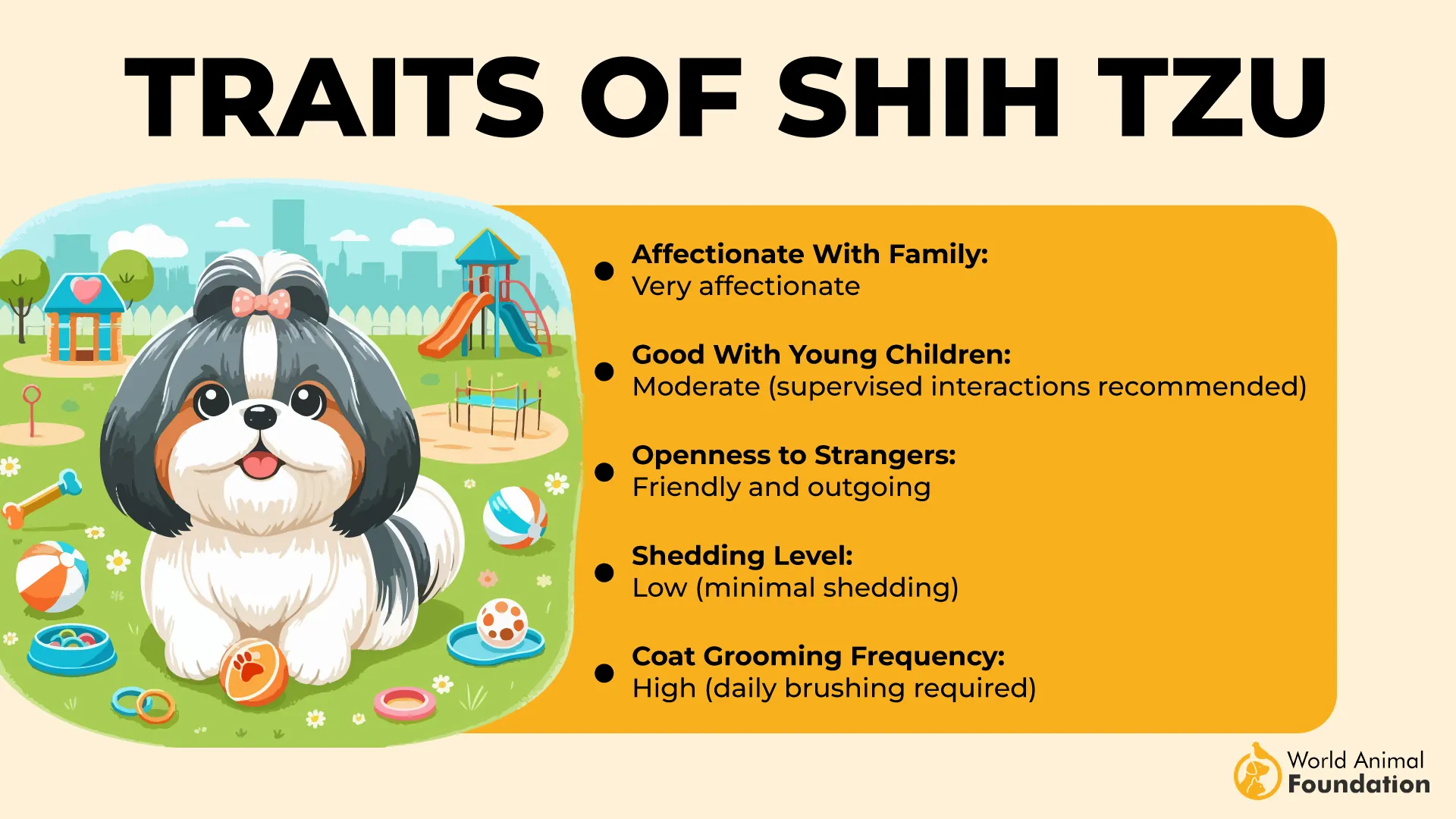
These dogs tend to form strong bonds with their families and are known to shadow their favorite humans from room to room—more companion than guard, but always alert.
Personality Meets Practicality
As one of the more easygoing dog breeds, the Shih Tzu doesn’t demand much beyond your attention and a little pampering. Their small size makes them apartment-friendly, and their moderate energy levels mean they’re happy with indoor play and short walks.
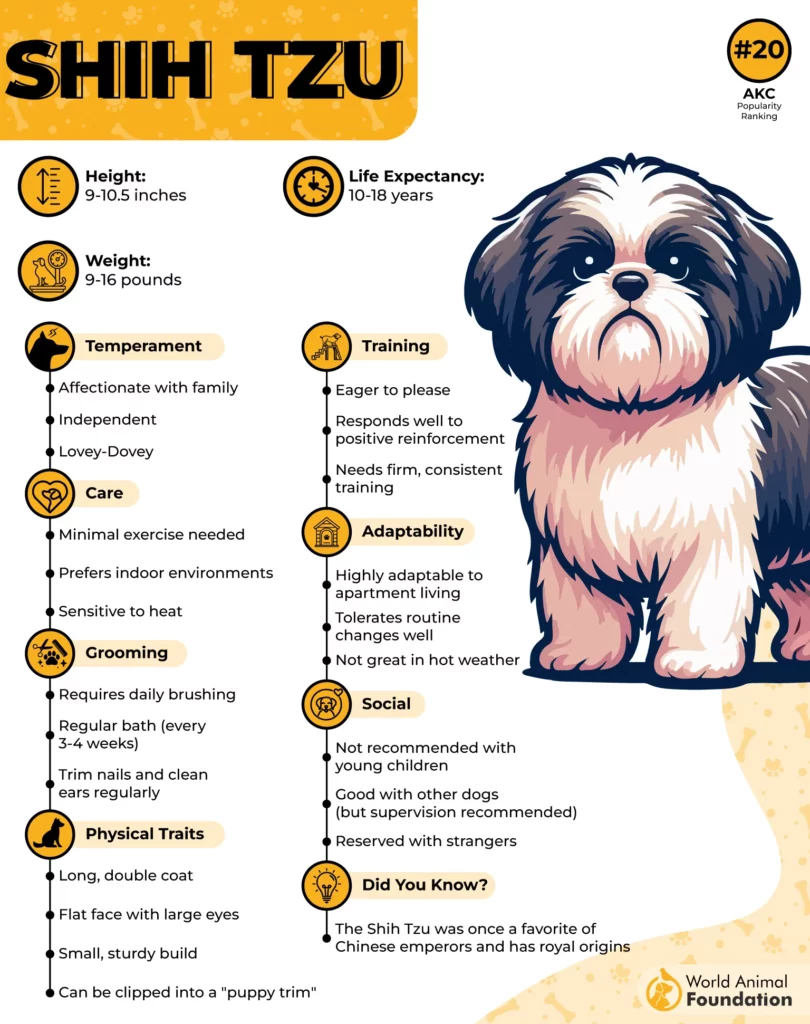
Longevity with Love
With proper care, Shih Tzus can live well into their teens, often reaching 15 years or more. Regular grooming and vet checkups keep them looking and feeling their best for the long haul.
2. Cavalier King Charles Spaniel
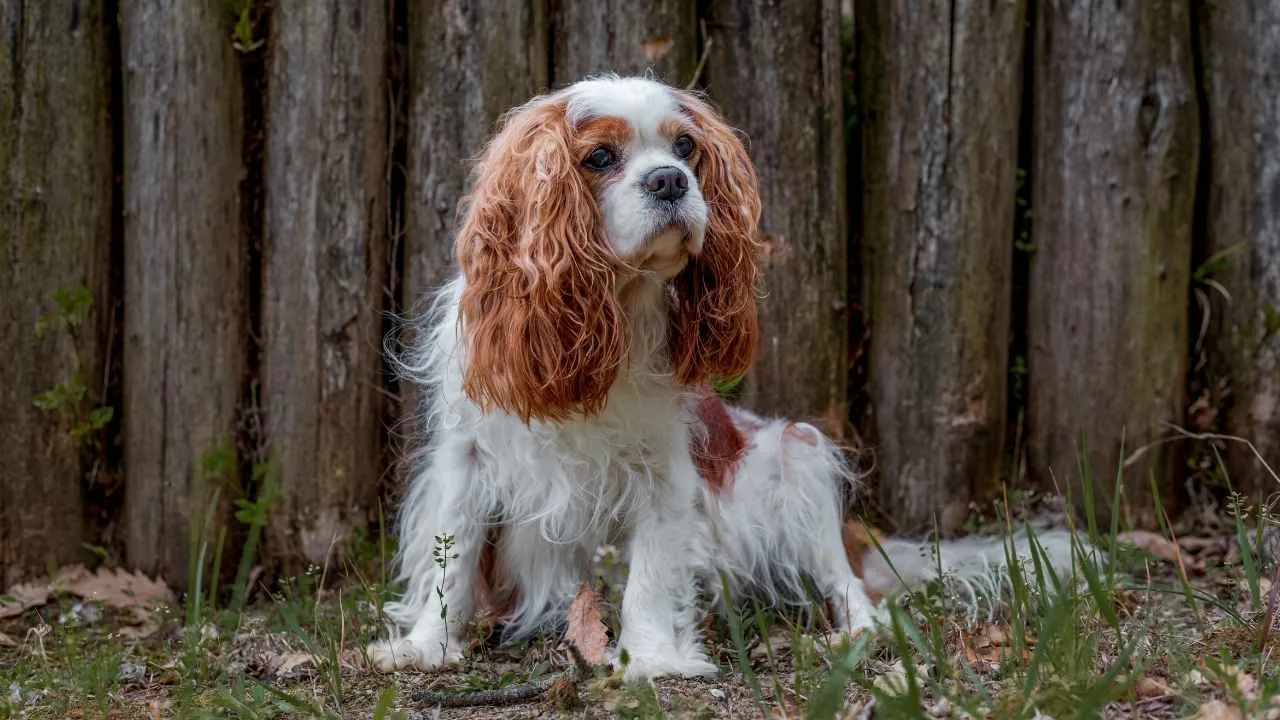
The Cavalier King Charles Spaniel is one of the calmest dog breeds you’ll come across. They’re quiet dogs—content sitting beside you yet always tuned into your movements, voice, or mood.
They don’t bark much and aren’t easily startled, which makes them ideal for peaceful homes and apartment living.
Genuinely Gentle Companions
This breed ranks high among quiet dog breeds not just because they’re soft-spoken, but because they prefer closeness over chaos.
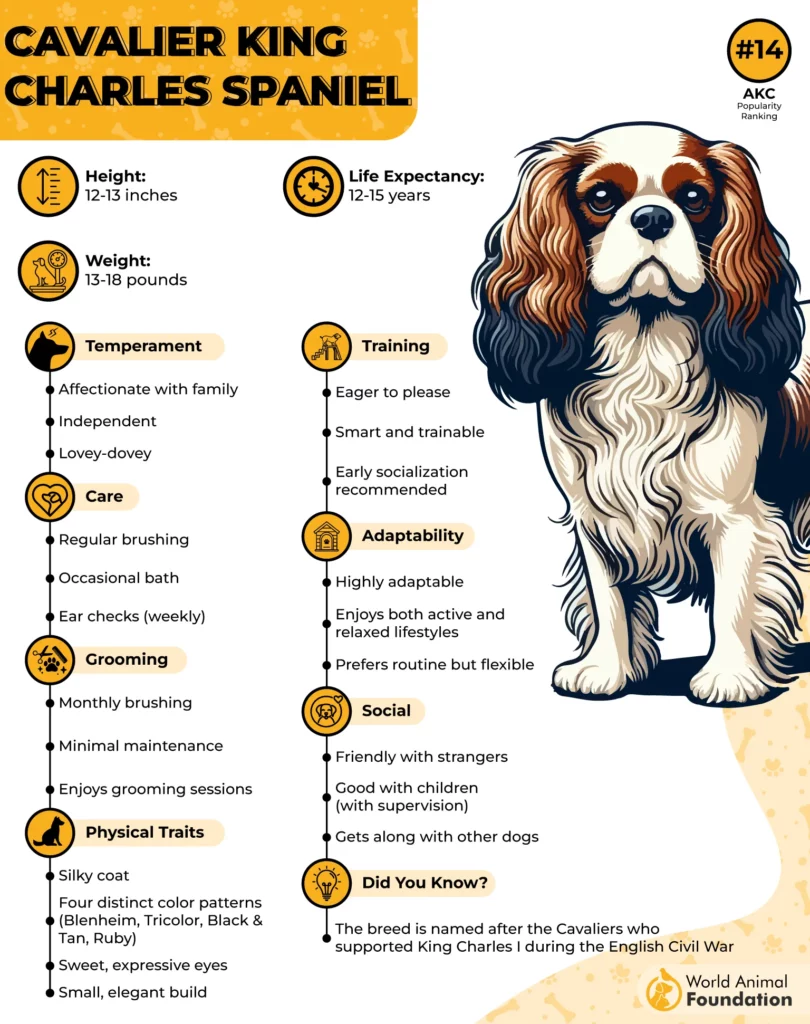
Cavaliers are incredibly people-oriented and do best when they’re around others most of the time. They’re sensitive to human emotions and are quick to respond to comfort or share affection without needing much in return.
A Calm Nature With a Touch of Curiosity
With a relaxed temperament, they’re adaptable to various routines, whether that means resting beside you during the day or joining in on a light stroll.
They enjoy short bursts of activity but don’t need long runs or intense play to stay happy. They’re more about connection than stimulation.
What Pet Parents Should Know
For pet parents, grooming is part of the routine, weekly brushing is necessary to manage their long, feathered coat, especially behind the ears and around the chest.
As per the Cavalier Health, they’re prone to heart conditions like mitral valve disease, so early vet checks and long-term monitoring are important for a healthy lifespan of around 12–15 years.
3. Pug
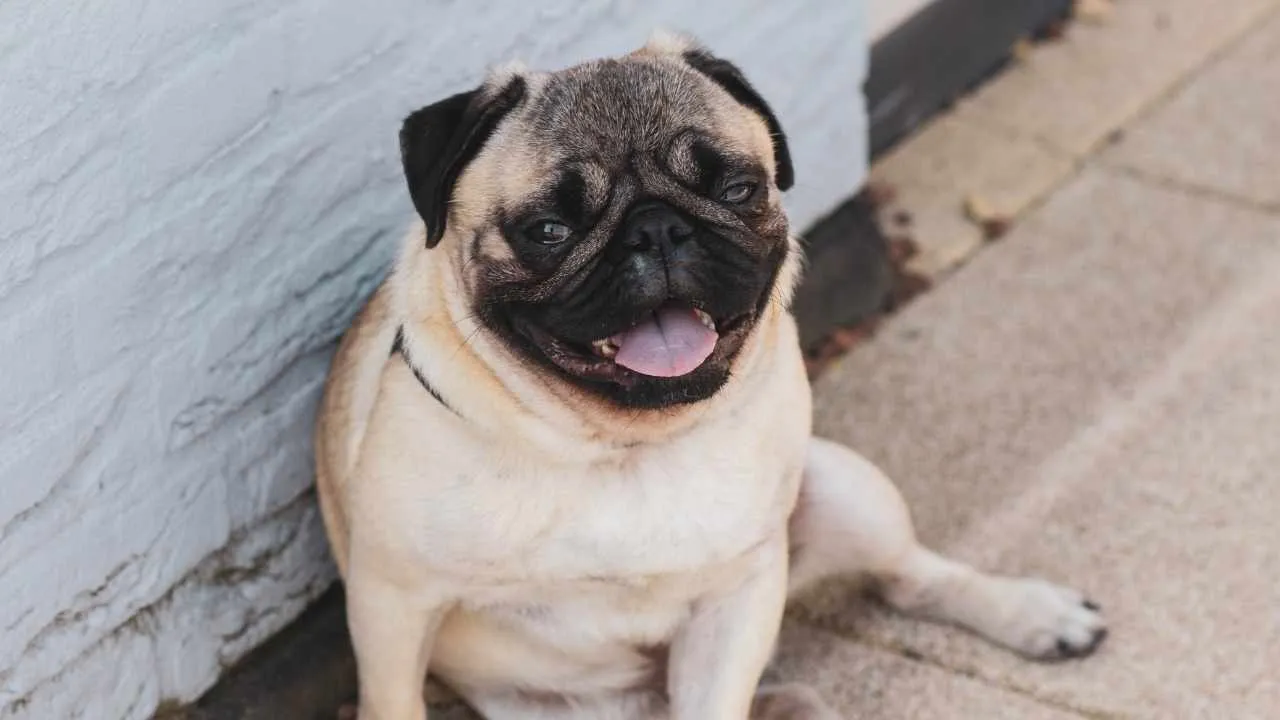
Pugs are observant little pups who thrive on routine and human interaction. Despite their goofiness, they’re incredibly perceptive and can pick up on your moods quickly.
That’s part of what makes them such a reliable choice among calm dog breeds—they know when to tone it down and when to turn on the charm.
Low Energy, High Affection
If you’re looking for a chill dog breed, the Pug fits the bill. They’re not built for long walks or high-intensity play, but they’ll follow you from room to room like a quiet little shadow.
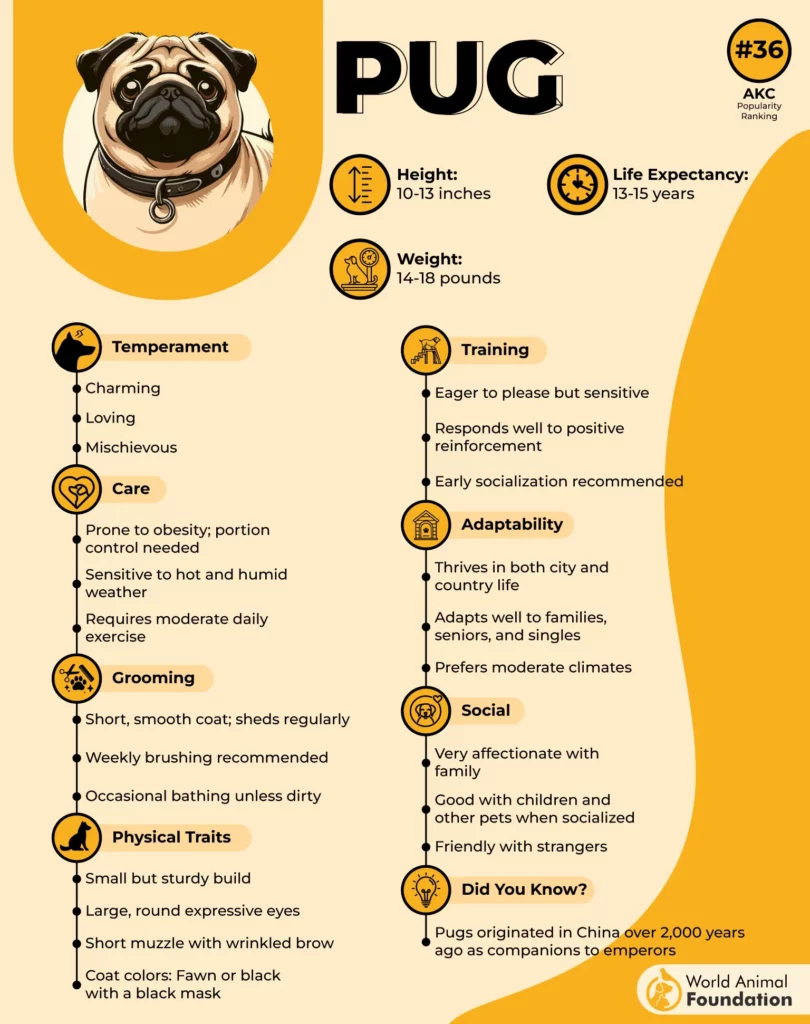
They’re content with short daily walks, a bit of indoor play, and a comfy spot on the couch. Even in busy households, they remain relaxed, unbothered by noise, movement, or new faces.
Willing, but with a Sense of Humor
Pugs are easy to train, but they’ll test your patience just enough to keep you humble. They’re food-motivated and quick learners, but their occasional stubborn streak means training works best when kept light and consistent, as highlighted by Greencross Vets.
Important Health Notes for New Owners
Their short noses mean Pugs can struggle with heat and humidity, so outdoor activity should always be brief and supervised. They’re prone to breathing issues, eye injuries, and weight gain, so diet and exercise need to be closely managed.
With regular checkups and care, Pugs often live 12–15 years, offering years of snorts, snoozes, and silent companionship.
4. Pomeranian
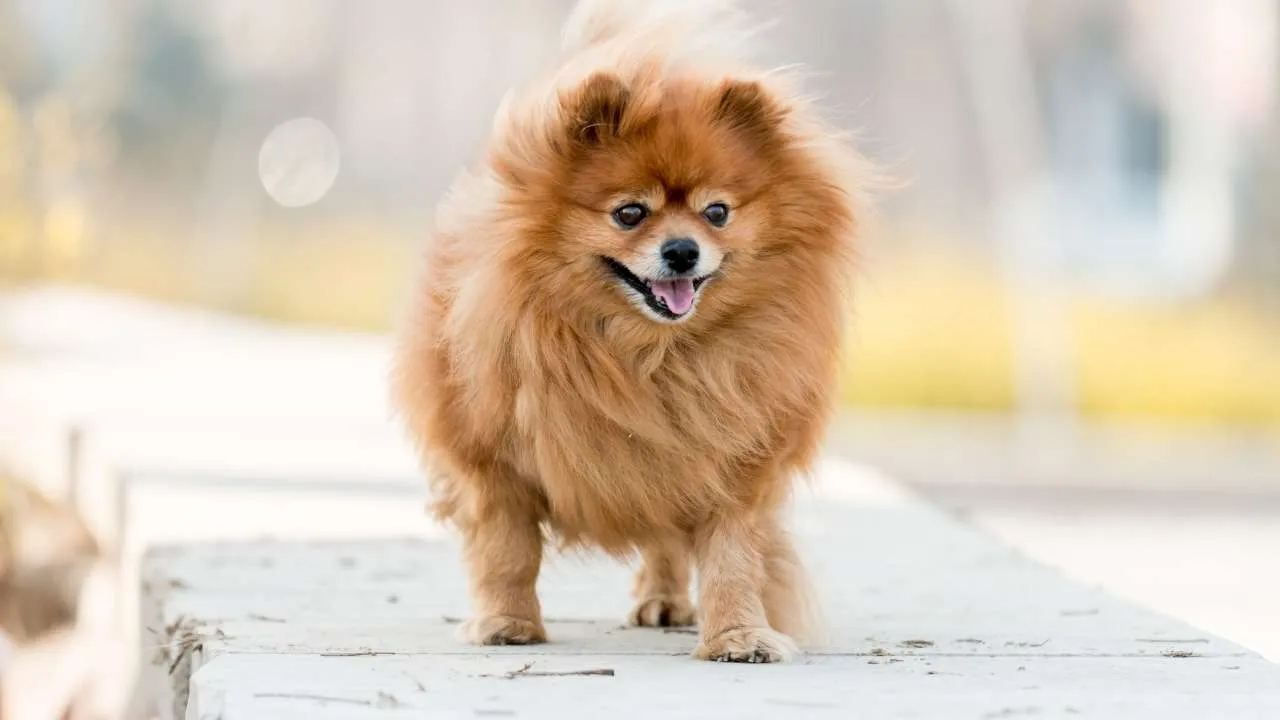
Though best known for their luxurious fluff and confident strut, Pomeranians are much more than just a pretty face. Underneath that vibrant coat is an even-tempered companion that’s both lively and self-assured.
They’re naturally inquisitive and love keeping tabs on everything around them, but with proper training and routine, they can be a wonderfully calm breed, especially in quieter households.
Small Dog, Big Brain
Pomeranians are quick thinkers and do best when their minds are kept active.
If you’re not providing enough mental stimulation, expect some sassy problem-solving (like figuring out how to get into treat drawers or alerting the whole neighborhood to a passing leaf).
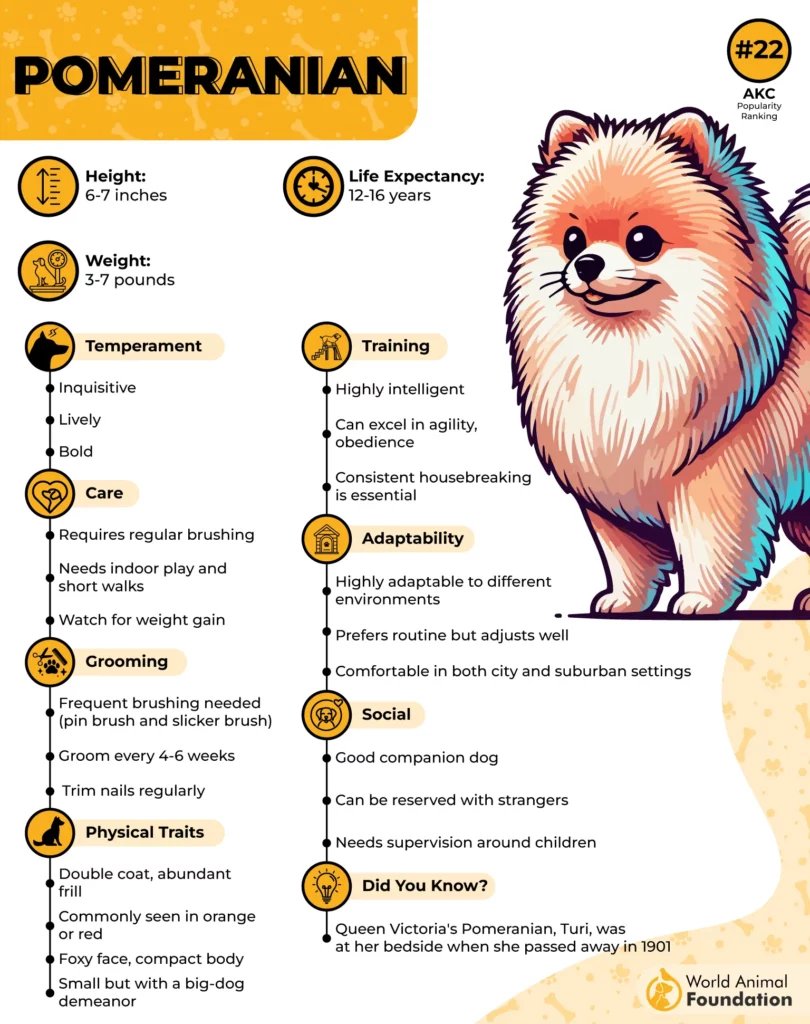
Daily training games, puzzle toys, and learning new tricks are all excellent ways to keep that busy little brain satisfied.
Loyal to the Core
Despite their size, they form very strong bonds with their owners and make loyal pets for those looking for companionship without the high maintenance of a large dog.
Many Pomeranian owners swear they’ve found the best dog in their pint-sized pal—someone who’s always nearby, always alert, and always up for a quick play or cuddle.
Health and Lifespan Details You Should Know
With an average lifespan of 12–16 years, Pomeranians tend to be long-lived for their size.
Common health concerns include dental issues, luxating patella, and tracheal collapse, so gentle handling and regular vet visits are essential.
Their thick double coat also needs brushing several times a week to prevent matting, especially around the neck and hindquarters.
5. Labrador Retriever
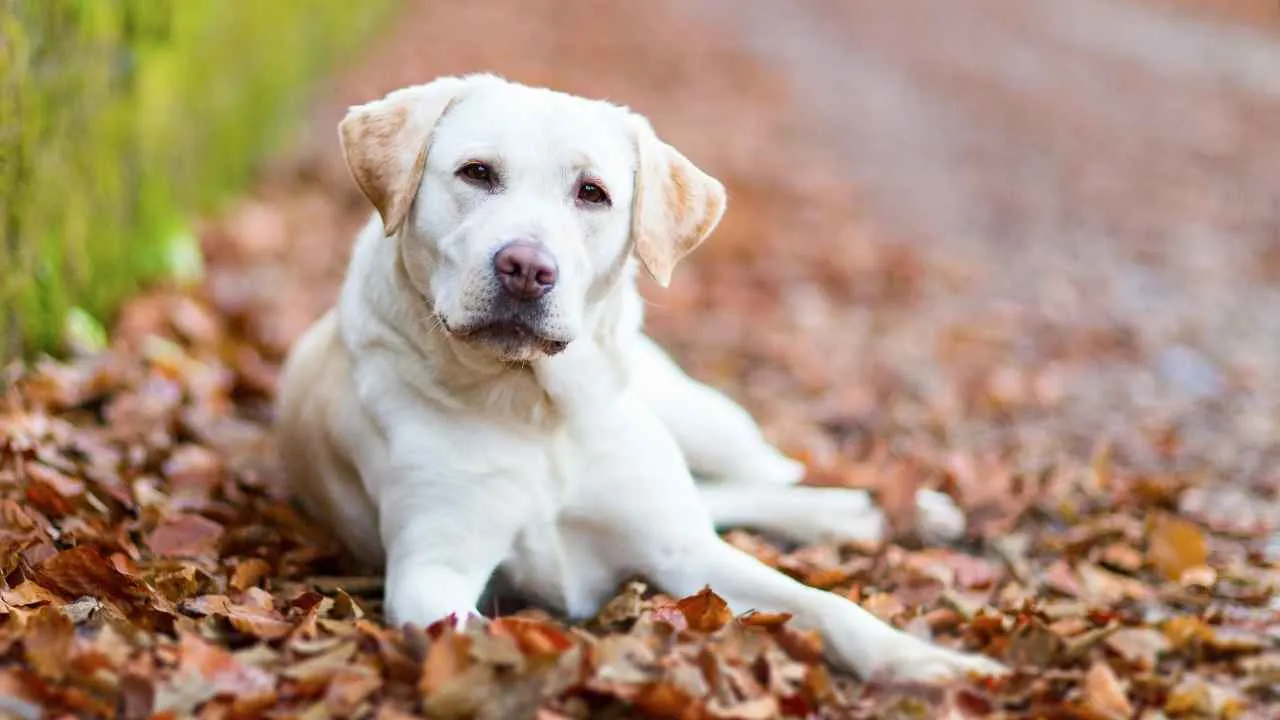
Labradors are famously known for their gentle temperament and high emotional intelligence. Whether it’s a chaotic home with kids or a quieter setup, they adapt smoothly and often become the emotional anchor of the household.
Their patience and non-reactive nature around other animals make them ideal for multi-pet homes, and their ability to read human cues makes them one of the most trusted breeds around.
Thrives on Structure and Engagement
Although Labs are laid-back, they’re far from lazy. They enjoy structure and do best when they’re physically and mentally engaged.
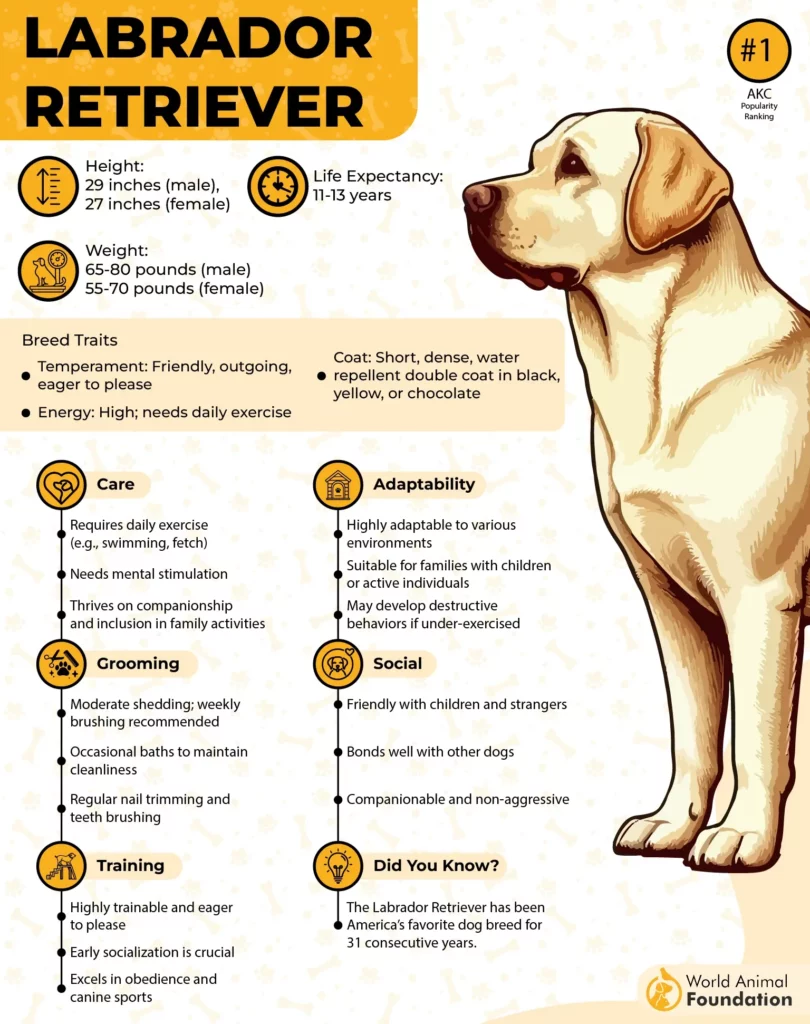
From puppyhood, consistent obedience training is key; it not only taps into their eagerness to please but also helps manage their natural exuberance. Walks, swimming, retrieval games, and scent work can all keep their energy in check and their tail wagging.
A Fit for Active Homes
Families who lean toward a more active lifestyle will find a perfect match in a Labrador. They’re built for movement and bonding. Their sturdy frame and love for play make them great outdoor companions, whether it’s a hike, a beach day, or just a backyard game of fetch.
Long-Term Health and Wellness
In terms of family life, Labradors are all-in. They’re gentle with children, respectful with elders, and accepting of other dogs.
To support their longevity, typically 10–12 years, it’s crucial to maintain a balanced diet, especially since they’re prone to obesity and joint issues.
Supplements for hips and routine check-ups for heart and thyroid function are a smart addition to their care routine.
6. Bichon Frise
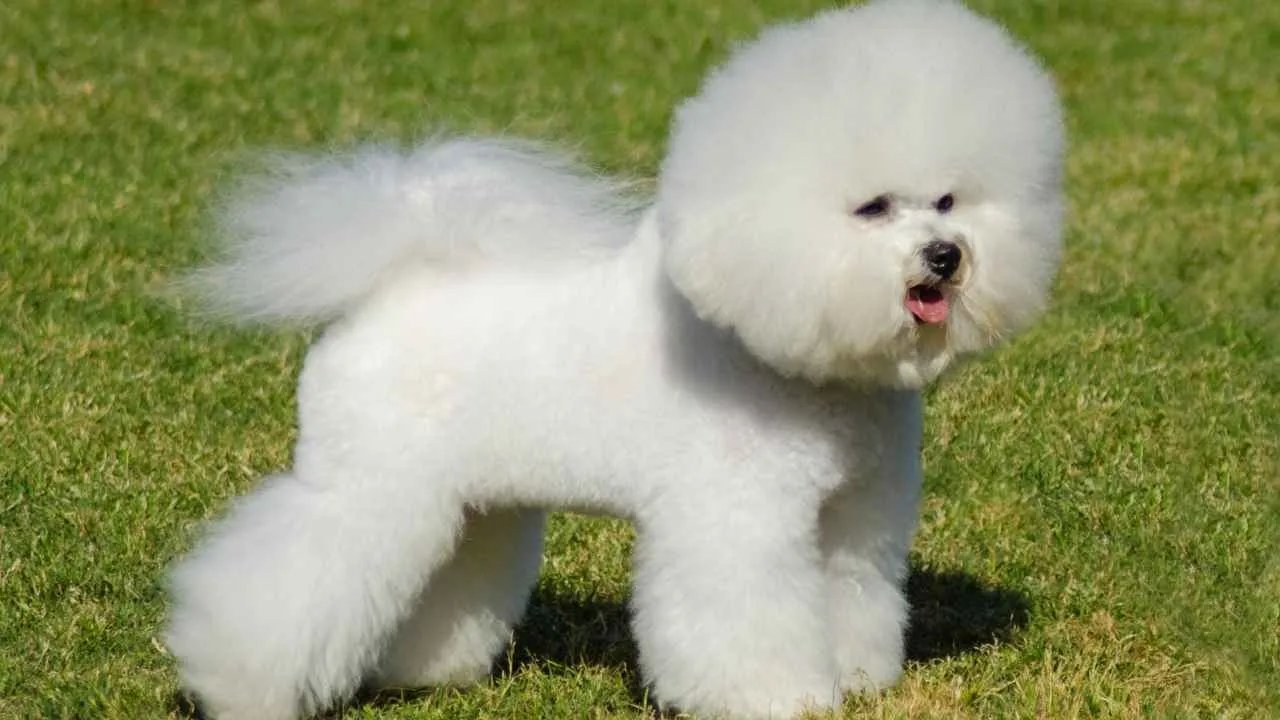
Few breeds wear joy on their face like the Bichon Frise. With their round eyes and cotton-ball coats, they’re often mistaken for stuffed animals.
These dogs are highly dedicated to their families and crave connection. Their affectionate nature isn’t occasional; it’s constant. If you’re home, they want to be wherever you are—on your lap, by your feet, or following you to the next room.
Trainable, Social, and Always Eager to Please
Bichons are smart and willing learners, making them a great fit for first-time owners who want a cheerful companion that listens. Their sociable personality and desire to get things right make them naturally eager participants in obedience training.
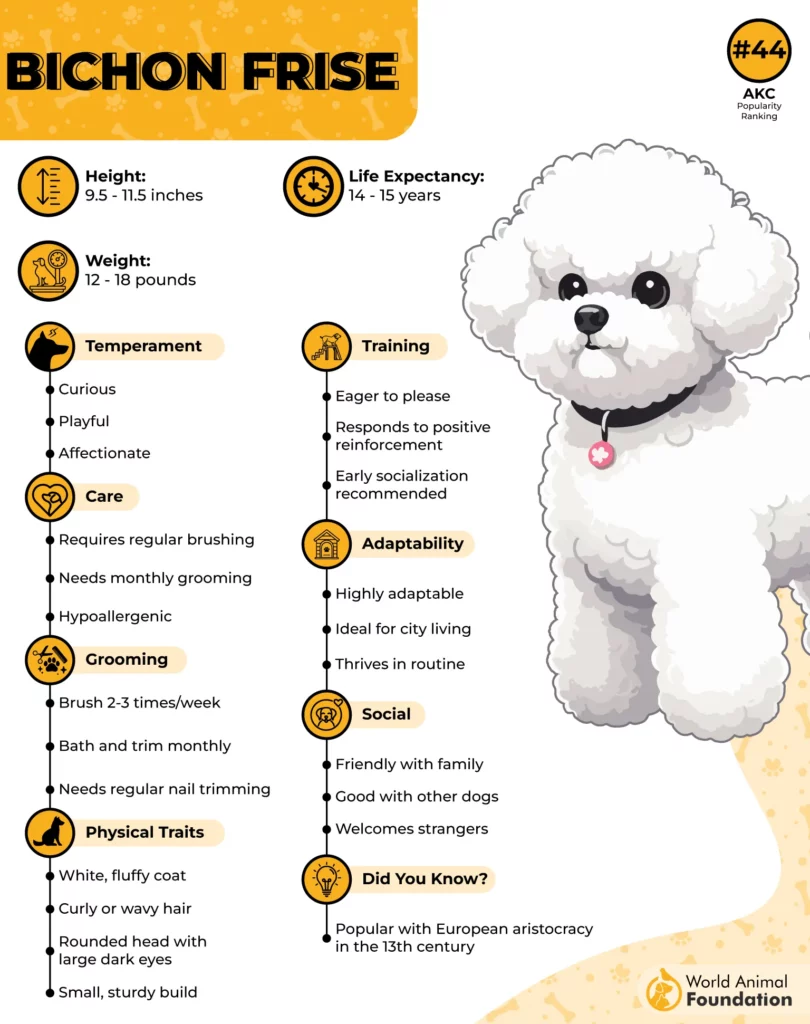
That said, they can have a mischievous streak, so early socialization and consistent routines go a long way in shaping them into well-mannered pets, as stated in Royal Canin.
Your Velcro Dog, But With Manners
These pups are devoted without being overly clingy. They’ll nudge for attention but won’t panic if you leave the room.
They adjust well to different living spaces, whether it’s a busy family home or a quieter apartment setup, as long as they get their daily dose of companionship and play.
Just keep in mind they don’t love being left alone for long periods—these dogs bond hard and fast.
Health and Grooming Matters
Lifespan typically ranges between 14–15 years with proper care. While generally healthy, Bichons can be prone to skin allergies and tear staining.
Their soft, curly coat doesn’t shed much, but regular grooming (every 4–6 weeks) is essential to prevent tangles and keep them looking like the fluffy charmers they are.
7. Shiba Inu

Shiba Inus are often admired for their fox-like looks, but their real charm lies in their unique personality. These dogs are independent by nature—quiet observers who often prefer to think before they act.
Their natural calmness makes them well-suited to homes where a low-drama, self-contained companion is appreciated. They’re not overly clingy, but they’ll always keep an eye on the people they trust.
Not Just a Pretty Face
Yes, they’re adorable, especially as puppies, but don’t let their cuteness distract you from their strong-willed side. Shibas are clever and can be stubborn during training, so they do best with calm, consistent guidance from early on.
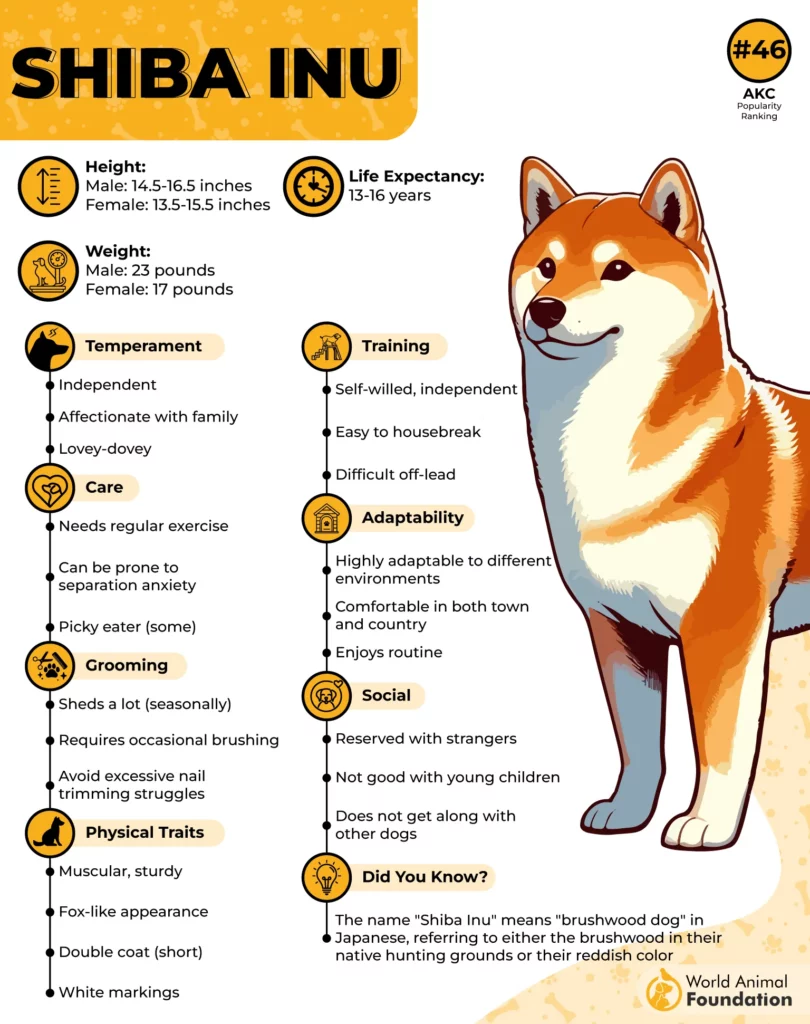
Socializing them from puppyhood is essential to shape their behavior, particularly with other pets and unfamiliar visitors.
A Breed for Those Who Appreciate Quiet Confidence
Shiba Inus don’t bark excessively, and they value their space, making them great for households that want a more reserved companion.
They’re clean dogs with almost cat-like grooming habits and require less physical attention than many high-energy breeds. However, they still need daily mental and physical activity to stay balanced and happy.
Health and Maintenance Notes
Shibas typically live 12–15 years with good care. They’re prone to allergies and joint issues like patellar luxation, so regular vet checkups are important.
Their coat sheds seasonally but requires only moderate brushing outside those times. Calm home environments suit them best, where trust is built slowly but surely.
Conclusion
Now you’ve met seven amazing dogs that combine a calm nature with watchful ways and long lives. What’s your next move? Think about which breed fits your space and time.
The Shih Tzu or Bichon might be perfect if you want a smaller friend for apartment living, while Labs make wonderful family pets when you have more room. These aren’t just pets – many become service dogs because they stay calm under pressure while staying alert to their owner’s needs.
Whatever you choose, remember that training with positive reinforcement works best for these smart breeds. They all need different levels of care, from the Bichon’s regular grooming to the Lab’s daily walks.
But at the end of the day, they all offer the same reward: a quieter breed of companion who’ll join you for a cozy nap and stick around for many happy years.


